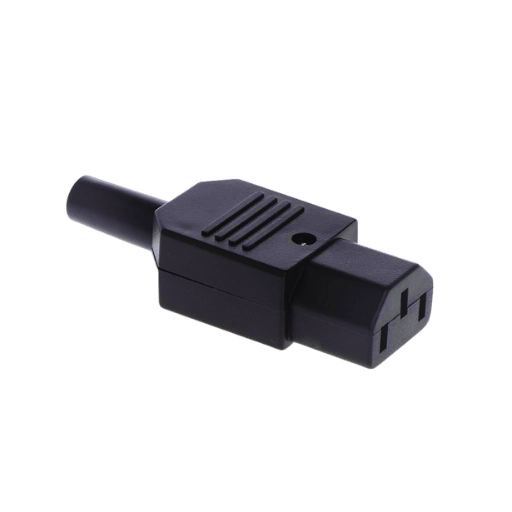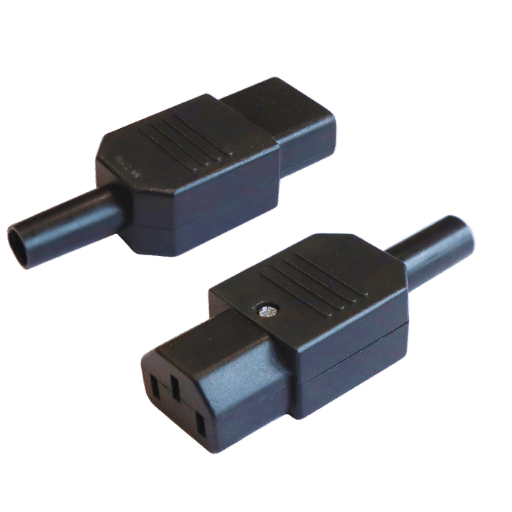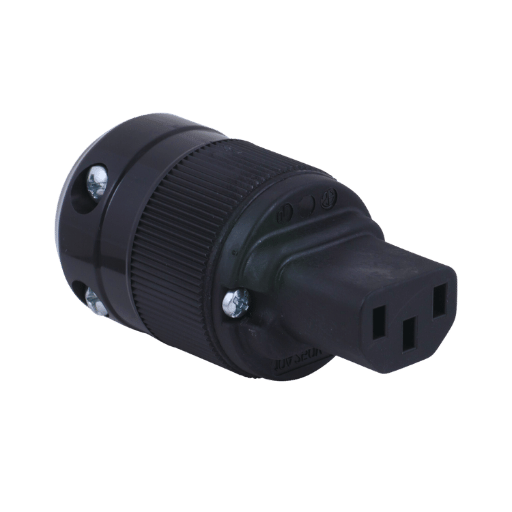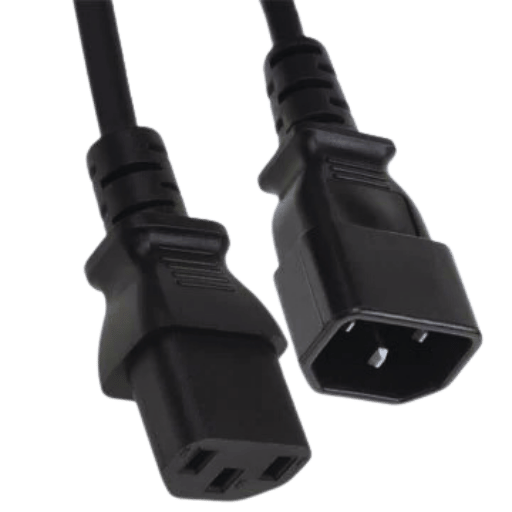With regard to the safe and efficient distribution of electrical power, a good-quality standardized interface is very important. Among a number of power cords, the IEC 320 C13 cord stands out, being used to support an array of electric appliances all over the world. Family, office, and data center equipment use the C13 connector as one of the many provided in the International Electrotechnical Commission (IEC) standard. The objective of this paper is to highlight the application areas, advantages, and physical characteristics of the IEC 320 C13 power cord, thus making readers appreciate the relevant nature of the equipment in modern power networks. Thus, combining interesting facts with a good description, this piece of work is useful in the enhancement of the knowledge of professionals and enthusiasts about electrical power installation systems.

An IEC 320 C13 represents a set standard power cable, having one end as a female C13 connector and the opposite end usually very often as an IEC 320 C14 male connector cable, which falls within the specification boundaries of the International Electrotechnical Commission. Its voltage grading remains at 250 volts while the amperage rating reaches 10 to 15 amperes. This type of cord is commonly used to deliver power from wall outlets to power apparatus, including computers, desktop servers, and powered monitors, with appropriate power delivery.
The IEC 320 C13 connector consists of three earthed pins and is rated for a maximum temperature of 70° on the Earth. Moreover, it can withstand a voltage of 250 volts and range in its current from 10 to 15 amperes. The C13 connector fits into sockets with both horizontal and vertical blades, making it suitable for a variety of electrical equipment. The length of the cord meets international regulations for the electrical structure, which helps in the safe use of the power system needed in places with a lot of work, like data centers and office buildings.
Some of the most commonly and widely used power cords are the IEC 320 C13 power cords, as they are versatile and rugged. These cables are mainly utilized in areas such as data centers where operations are tethered to the power cords that link servers, routers, and network switches to power sources that are essential so that there are no downtimes for IT operations. C13 cords are found in most offices, where they are used to connect computers and computer monitors as well as printers for smooth operations. Also, they are often found in the medical context and employed for non-life-supporting devices, such as monitors and laboratory devices. The C13, which is designed in accordance with the standards IEC, also helps make a firm connection that will support devices with power ratings between 10 to 15amps and voltage of up to 250 volts. It is due to these specifications that the IEC 320 C13 power cords are able to deliver power continuously, which is crucial in enhancing performance and protecting devices for various professional uses.
The IEC 320 C13 connector is very well accepted and used in almost all industry verticals due to the fact that all its safety and performance requirements meet international helping standards. This modular connector is known to provide a stable power supply, which is very important for the attacked gear in environments such as data centers and offices. The thick material also gives the connector a long life, cutting down costs that would have gone into regular reconstruction of the machine. The C13connector also has the flexibility and scalability that is necessary for the future development of technology infrastructures so as to ensure that future requirements are met.

The IEC 320 C13 connector is engaged more implacably into the C14 inlet, which is a common interface found in several peripherals and IT devices. The coupling is simple due to their inter-complementary form making it easy to lock the position where both parts of the powerable devices can interconnect. To ensure usability with the North American outlets, C13 connector type also has its design which is compatible with NEMA plug types, this is mostly through a power cord with C13 on one end and a standard NEMA co more complex. This arrangement helps to make sure that the present structures of operation by foreign centers are at least altered.
The use of the IEC 320 C13 power cord requires the user to check whether the device and the power supply have proper power supply ports. First, insert the C13 connector into the monitor or into the C14 inlet located at the back of the monitor or PC. Then insert the other end which is either a NEMA 5-15P plug’ or an appropriate wall socket. This arrangement allows a seamless flow of power, accomplishing a constant and efficient power supply to your device. Note the specifications of the equipment to ensure that this does not occur.
The IEC 320 C13 connector finds wide application in providing power to several electronic devices such as printers and Samsung electronics. Most printers, in particular those arising from non-professional usage, support the C14 type of input, which allows the unit to be fed with a C13 power chord, as well as some Samsung team devices such as monitors and TVs. Power device specifications must be checked thoroughly before plugging them into sockets as these will ensure that voltage and power ratings of all apparatus are within the set limit to avoid device breakdowns. The C13 connector gives ample power harnessing benefits provided the machine has the adequately designed C14 aperture.

This type of power cord, particularized as the IEC 320 C13, is specifically made to provide power that remains constant and reliable, which is a critical factor for the operational efficiency of various electronic devices. This cord’s robust construction prevents any electrical shorts and protects from unexpected power loss. Additionally, the C13 connectors are shaped in such a way that they fit well in the C14 inlets, which reduces the risk of removing of the devices from the mains during their running. Also, such standardization of design ensures that devices from several manufacturers can share a fraction of the plugs, cords, or heads that would have otherwise been provided with each instrument, rendering a need for many types of cables unnecessary. The industry statistics claim that the use of their high-class power cords, such as IEC 320 C13, particularly in the office environment, can increase operational efficiency, risking downtime for power problems of up to 30%, which is why it is significant in office use as well as in-home use.
The IEC 320 C13 Power connector series is capable of being used with the available power cords of both 18 AWG and 14 AWG. The 18 AWG power cord is normally used on low-current general household appliances, facilitating up to 10 amps of current. Therefore, devices such as computers, ordinary monitors, and the like are suitable. However, the 14 AWG power also has a similar configuration but supports up to 15 amps of current – thus, even heavy appliances or professional-grade equipment settings can be found. In selecting the right power cord for the particular device, the total amperage requirement for the device should not be neglected for both security and efficiency purposes.
Making use of a 10A or a 15A-rated power cord requires one to consider the amp rating pertaining to that cord and the device as well. This prevents the device and the electric cord from heating up and even catching fire. Power cords with a rating of 10 A are recommended for devices with low power, which will draw only that much current and not stress the cord anymore. A power cord with a rating of 15 A is meant for devices that are more power-hungry and therefore allow a higher current to flow through them safely. Apart from these power ratings, it is equally important to check if the outlay circuit rating will be able to handle these ratings and conform to local electrical safety requirements. Improper installation and poor usage of cords lead to wear and tear; therefore, in order to support the power management system safety feature, the power cords and other sources of power will always need inspection timely.

What is important to consider before selecting the IEC-320-C13 cord in the way you prefer? You ought to know whether an angled or straight connector is better suited against the device’s orientation. Angled ones tend to be easier for cable management in tight spots or where one has to change the direction of the cord immediately away from the device. Straight ones are more useful whenever there are no space limitations, and it is a straightforward connecting need. Both have the same electrical characteristics and amp ratings, so the decision is more about physical space and intended use of the cord.
Cord practicality and endurance, along with installation practices for heavy-duty and power extension cords vary based on the expected working conditions and use frequency. Most of the time, durable cords feature a thicker thermal or rubber outer layer, which withstands cuts, abrasions, and moisture while being more resistant than standard material. Heavy-duty cords come with a relatively higher current rating, say, 20A or 30A, which are safe and can stand higher electrical loads than regular extension cords and are more often used in an industrial or outside environment. Additional attention should also be paid to the imaginations of UL and CSA certifications. A good cord will work effectively in making sure power goes through effortlessly for a long time, especially in harsh conditions.
The American Wire Gauge (AWG) is an internationally recognized wire gauge system for the size of electrical conductors, the larger the conductor the smaller the gauge number. This system is important in establishing how much current a wire can safely hold.” Other than that, they explain that increasing wire sizes (i.e., a smaller AWG number) would mean more current capacity and, therefore, bigger applications. AWG designations are often associated with other specifications to ensure there is adherence to safety and functional performance standards such as wire insulation, wire insulation wire material, and maximum rated temperature. These standards help to ensure the performance of the wires within the prescribed limits to prevent overheating and, thereby, electrical failure. Understanding these incorporated elements in applying AWG rating in wire harnessing is very critical in achieving electrical safety and efficiency, especially in industrial and even residential areas.

IEC 320 cords can be said to be of a universal nature as their construction conforms to a number of electrical appliances, mostly computers and consumer electronics around the world. This universality emanates from the adoption of the integrated international IEC 60320 connectors, which encompass a number of appliances and power systems in various countries. The uniformity in their construction and layout pattern enhances exchangeability and increases usability where these cords cud be used for both local and foreign based market.
IEC 60320 C13 and IEC 320 are terms that refer to parts that have been cautiously designed and endorsed on an international level with respect to electrical safety and operability. IEC 320 is a common term with more than half its purview not falling within the ambit of adoption because it relates only to appliance couplers that cross several ranges of demand. “IEC 60320 C13,” on the other hand, describes c13 connectors as derivatives that are used in adapters for computers, servers, and their components only. Specifically, in C13, a coupler has a specific pin out that can only connect with like devices to provide specificity in design. The correct use of these terms is most important in ensuring the technical correctness of information communication and ascertaining the right part for electric consumables and appliances.
You can buy Replacement IEC 320 C13 cords from many trustworthy sources. One such source is Amazon, where a variety of cords from different brands can be located, with a majority of the products being rated by many users. Newegg is also preferred since it is a reputable electronic and technical sales site whose prices are fair and has good product details. Also, Cables.com sells cords, in addition to other empirical products, and has well-organized sections for various cord types, even the IEC 320 C13, making sure you get what you are looking for without any hassles. All these platforms offer several options as well as delivery services to accommodate all customers regardless of their needs and budgets.
A: An IEC 320 C13 cord, also called as an IEC 320 C13 power cord, is a standard power, electric cable designed for plugging computers, servers, and various other devices to an electric outlet.
A: These types of devices like computer systems, server systems, LCDs, and other peripherals often make use of IEC 320 C13 cord. This power connection is often seen in Dell and Tripp Lite powered devices.
A: You can. You can attach the IEC 320 C13 Cord with Nema 5-15P to the IEC320C13 Connector for US AC power sources. This configuration is seen with loads of consumer devices.
A: The IEC320 C13 is a female connector whereas the IEC320 C14 is a male connector. It is common to have the C13 connector at one end and a C14 on the other in PDU power cords used for IT and other appliances.
A: Yes, the IEC 320 C13 cord also has angled versions like the angle IEC-320-C13, which comes in handy in concealed areas where a straight connector would be difficult to fit. This version is also used quite often to make it an L shape.
A: The IEC 320 C13 cords are rated for 250V and maximum of 10A. This helps the cord to be used with a good number of the electronic gadgets assuring safe use of power.
A: Yes, there are heavy-duty versions of IEC 320 C13 cords. This cords are made for higher stress conditions and therefore has better resistance to damage and a longer service life. They are appropriate for essential equipment and server settings.
A: Yes, you can connect an IEC 320 C13 cord to extension power or extension cable to the power supply point in order to increase sight of the power connection. This versatility is important for different layouts and structures.
A: “UL listed” refers to the standard that has been tested of the IEC 320 C13 cord by Underwriters Laboratories that states it has safety and quality. This is relevant primarily in industrial and professional use were safety or dependability is of critical importance thanks to this kind of certification.
A: Yes, as stated the IEC 320 C13 cord is usable all over the world although you may require some particular adapters depending on the type of power socket in the country to where you are traveling. For instance, a visit to the UK could be supportive with the recommend plug adapters unlike when going to the USA.